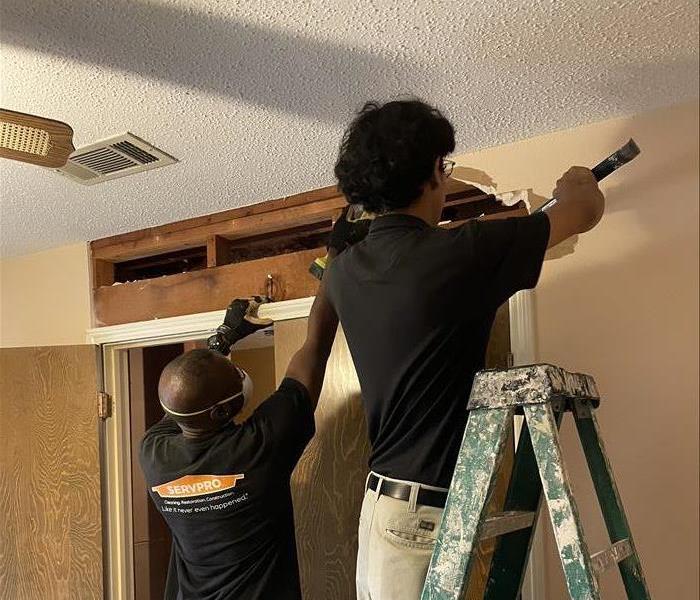Recognizing Mold in Your Home: Our Guide to Identification and Action
11/23/2023 (Permalink)
At SERVPRO, we understand that recognizing mold in your home is the first step in addressing this potentially hazardous issue. Mold can be insidious, often hiding in plain sight until it becomes a more significant problem. To help you protect your home and your family's health, we want to share our expertise on how to recognize signs of mold and the steps to take when you suspect its presence.
Recognizing Signs of Mold:
1. Visible Mold Growth:
The most obvious sign of mold is visible growth on surfaces. Mold can appear in various colors, including black, green, white, or brown. It often appears as patches or clusters and can develop on walls, ceilings, floors, or even household items.
2. Musty Odor:
Mold emits a distinctive musty odor. If you notice an unpleasant, earthy smell in your home, especially in areas with poor ventilation or a history of moisture issues, it may indicate hidden mold growth.
3. Water Stains and Discoloration:
Water stains or discoloration on walls, ceilings, or floors can be indicative of a water leak or moisture problem, which can lead to mold growth. Pay attention to any areas that have experienced water intrusion.
4. Allergic Reactions:
Some individuals are sensitive to mold allergens and may experience allergic reactions when exposed. Common symptoms include sneezing, coughing, itchy or watery eyes, nasal congestion, and skin irritation. If these symptoms worsen when you're at home and improve when you leave, it could be a sign of mold.
5. Respiratory Issues:
Prolonged exposure to mold can lead to more severe respiratory problems, especially for those with pre-existing conditions like asthma or allergies. If you or your family members experience persistent respiratory issues while at home, it's essential to investigate for mold.
Steps to Take When You Suspect Mold:
1. Inspect Your Home:
Begin by inspecting your home for signs of mold. Look in areas where moisture is common, such as bathrooms, kitchens, basements, and around windows and doors. Don't forget to check hidden or less frequently used spaces like attics, crawl spaces, and behind appliances.
2. Address Water Issues:
If you discover water leaks, plumbing issues, or water stains, address them promptly to prevent further moisture buildup. Mold thrives in damp environments, so controlling moisture is essential.
3. Seek Professional Mold Inspection:
If you suspect mold but can't locate its source, or if you find extensive mold growth, it's wise to seek professional mold inspection services. Certified experts like SERVPRO can assess the extent of the problem and recommend appropriate remediation steps.
4. Mold Remediation:
If mold is confirmed, professional mold remediation is crucial to safely and effectively remove the mold and prevent its return. Attempting to remove mold yourself can lead to its spread and potential health risks.
5. Preventive Measures:
Once mold is remediated, take preventive measures to minimize the risk of future growth. This may include improving ventilation, addressing moisture issues, and using mold-resistant materials in susceptible areas.
6. Regular Maintenance:
Regularly inspect your home for signs of moisture and address any issues promptly. Routine maintenance can help prevent mold problems from recurring.
At SERVPRO, your safety and the well-being of your home are our top priorities. If you suspect mold in your home, don't hesitate to reach out to us for professional mold inspection and remediation services. Our certified technicians have the expertise and equipment to address mold issues effectively, ensuring your home remains a safe and healthy environment for you and your family. Mold may be tricky, but with the right knowledge and action, you can keep it at bay.




 24/7 Emergency Service
24/7 Emergency Service
